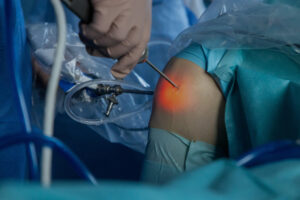
Hysteroscopy Laser Surgery Procedure
Laser hysteroscopy treats intrauterine lesions in one outpatient visit, minimizing bleeding and preserving fertility while streamlining OR time.
From dental and cosmetic treatments to complex urological and thoracic operations, the medical use of lasers has become widespread in modern healthcare.
By harnessing lasers in medicine and surgery, healthcare professionals can perform safer, more precise, and minimally invasive procedures — significantly enhancing patient care.

Lasers used in surgery emit focused beams of light that accurately target tissue, helping reduce damage to surrounding areas. This precision is why lasers are adopted for both diagnostics and treatments across multiple specialties.
Lasers enable surgeons to tackle more complex tasks, minimize blood loss, lessen postoperative discomfort, and lower the risk of wound infection — all of which contribute to better healing.
As the use of lasers in the medical field continues to advance, the types of laser surgery procedures keep expanding, leading to more effective disease management, greater patient outcomes, and innovative treatments that push the boundaries of modern medicine.
Various specialties use lasers in medicine and surgery, including:
Their goal is to offer safer, more precise treatments while improving patient comfort and recovery.
CO₂ lasers deliver intense light energy at a wavelength absorbed by water-rich tissues.
Typical applications include ENT procedures (e.g., tonsil and throat surgeries), dermatological treatments (skin resurfacing), and various soft-tissue operations where precise cutting with built-in hemostasis is needed.
Examples: DEKA is recognized worldwide for its CO₂ laser technology, delivering exceptional soft-tissue precision and control.
Holmium lasers produce light at a wavelength (around 2100 nm) absorbed by water, enabling the efficient fragmentation of stones and precise cutting of tissue.
Typical applications include urological stone management (lithotripsy), benign prostatic hyperplasia (BPH) treatments, and orthopedic arthroscopic procedures.
Examples: Quanta System’s Holmium lasers offer robust energy output and fine control for stone fragmentation or soft-tissue work.
Similar to holmium lasers in their water absorption properties, Thulium lasers operate at a slightly different wavelength (around 1900 nm), allowing for smooth tissue incision and effective vaporization.
Typical applications include urological treatments such as vaporization or enucleation of the prostate, along with select soft-tissue surgeries requiring precision and minimal bleeding.
Examples: Quanta System brings advanced thulium technology to the surgical field. Surgeons can perform tissue ablation and stone management with a cleaner, more controlled laser beam, improving patient outcomes.
Diode lasers typically emit at wavelengths absorbed by hemoglobin and melanin, enabling effective hemostasis and soft-tissue cutting.
Typical applications include dental procedures like gingivectomy, minor soft-tissue revisions in ENT or dermatology, and select cosmetic treatments (e.g., hair removal).
Examples: There are several types of diode lasers, including quantum well laser diodes, Fabry-Perot laser diodes, and fiber-coupled diode lasers, each offering distinct advantages in terms of wavelength, output power, and beam delivery.
Nd:YAG lasers emit near-infrared light (1064 nm) that penetrates deeper into tissues, providing strong coagulation and effective subgingival bacterial reduction.
Typical applications include certain periodontal procedures, vascular lesion treatments, and select minimally invasive surgeries where deeper thermal penetration is advantageous.
Examples: Nd:YAG lasers come in several forms, such as long-pulsed and Q-switched models, each offering distinct pulse durations suited for specific clinical applications.

Laser hysteroscopy treats intrauterine lesions in one outpatient visit, minimizing bleeding and preserving fertility while streamlining OR time.

Laser colposcopy treats cervical lesions in one visit, minimizing bleeding and streamlining recovery for patients and clinics.

Arthroscopic knee surgery with holmium lasers delivers precise cuts, instant hemostasis, and faster recovery, transforming hip, shoulder, and ankle scopes too.

Blepharoplasty laser surgery refines upper and lower eyelids with precise CO₂ energy for less bruising, and faster recovery.

Laser-enhanced sclerotherapy endoscopy pairs sclerosant injection with in-scope photocoagulation for faster hemostasis and fewer rebleeds.

Learn how the endoscopic injection procedure is performed and what it treats, including the role of sterile injection needles and key safety considerations.
International Medical Lasers (IML) specializes in distributing state-of-the-art medical laser systems from leading brands that allow for precise, effective, and patient-friendly procedures across all the specialties mentioned above.
Whether you’re a medical device sales professional in the U.S. looking to expand your business or a practice looking to integrate more lasers into your procedures, connect with us today for more information about our range of laser technologies.